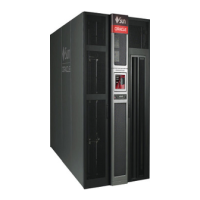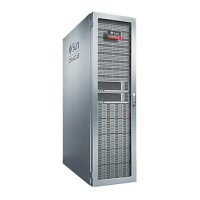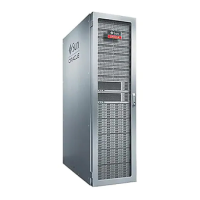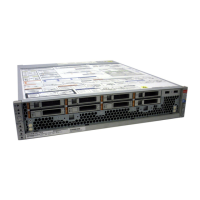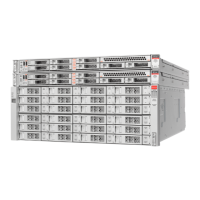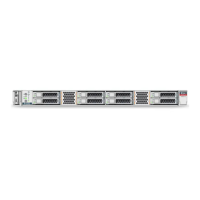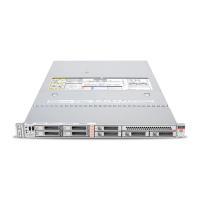Configuring Drive Cleaning Operations
3-2 StorageTek SL150 Modular Tape Library User's Guide
The SL150 user interface is notified when LTO drives require cleaning, and most host
backup and storage management applications recognize the requests as well. You can
thus handle the required cleanings in any of three ways:
■ Using the Library Drive Auto Clean Feature
■ Using Host-Managed Drive Cleaning
■ Planning to Use Manual Cleaning.
Using the Library Drive Auto Clean Feature
The SL150 Drive Auto Clean feature is the most easily configured and most flexible
way to safely clean all of the LTO drives in the library. When the feature is enabled, the
library automatically performs a cleaning whenever a drive requests one.
To use the Drive Auto Clean feature, the library must have one or more system
reserved slots configured. At least one LTO universal cleaning cartridges (type
CU
)
must reside in these slots.
You set up the Drive Auto Clean feature when you configure library settings, as
described in the next chapter. For now, just obtain the required number of cleaning
cartridges
on page 3-7.
Using Host-Managed Drive Cleaning
Many storage-management and backup applications can be configured to initiate
cleaning when a drive requests it. Examples include Oracle Secure Backup, Symantec
NetBackup, IBM Tivoli Storage Manager, and others. You typically specify Automatic,
Tape Alert, or reactive cleaning (the exact nomenclature depends on the application).
The host application can then manage cleaning of drives that it controls, provided that
cleaning media are available.
This approach has one major advantage. The host application remains in control of its
assigned drives and storage slots at all times. The application that is responsible for
the stored data thus coordinates all tape movements and drive operations in the host's
assigned library or partition.
In partitioned libraries, the approach also has some noteworthy limitations. A host
application in a partitioned library can only access drives and storage slots that it
controls. It cannot access cleaning media stored in the library's reserved slots. It cannot
access cleaning media stored in another partition of a partitioned library. Nor can it
clean drives that are assigned to other partitions. So, to adequately clean all drives in a
partitioned library, you must provide duplicate cleaning media in each partition.
These extra cleaning tapes take up storage slots that could otherwise hold data tapes.
The remainder of this section summarizes the steps that you need to take in order to
set up some commonly used library host applications. Note, however, that the
procedures below are summaries. Always consult the host application documentation
for full details and late-breaking changes!
Configure Automatic Cleaning in Oracle Secure Backup During Drive Setup
Oracle Secure Backup can automatically initiate cleaning when a tape drive requests it.
The software checks for cleaning requests whenever a cartridge is loaded or unloaded.
If cleaning is required, Oracle Secure Backup loads a cleaning cartridge, waits for the
cleaning cycle to complete, replaces the cleaning cartridge in its original storage
element, and continues with the requested load or unload. To configure automatic
cleaning, proceed as follows:
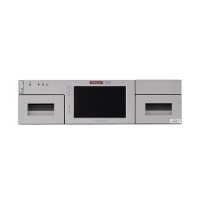
